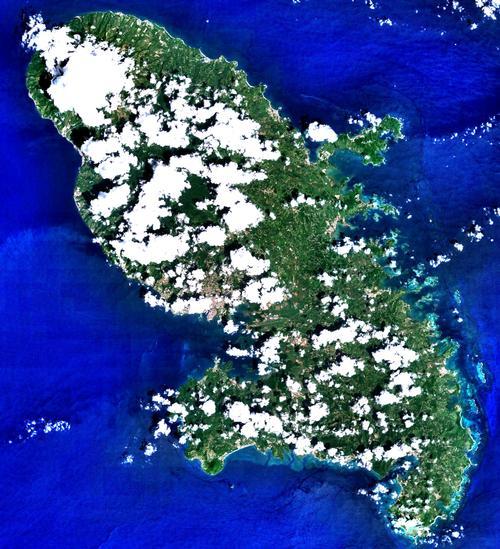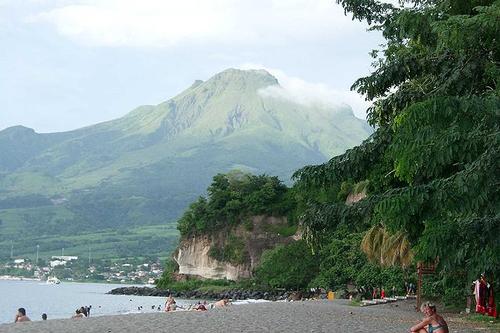MARTINIQUE
Geography and Landscape

Geography and Landscape
| Basic information | |
| Official language | French |
| Capital | Fort-de-France |
| Area | 1.102 km² |
| Population | 374,768 (2021) |
| Currency | euro (EUR) |
| Web | .mq |
| Code. | MTQ |
| Tel. | +596 |

Geography and Landscape
Geography
Martinique is an island in the Caribbean Sea, the southernmost island of the French Antilles and part of the Lesser Antilles. The island is 80 kilometres long and 25 kilometres wide and covers an area of 1360 square kilometres. Martinique is located approximately 700 kilometres south-east of the Dominican Republic. It lies south of Dominica and north of Saint Lucia, and belongs to the Windward Islands. Its total area is 1,102 km².

Landscape
The landscape of the island is volcanic in nature and is enriched with waterfalls and hot springs. In the north of the island is the dormant stratovolcano Mont Pelée (1397 metres).
 Mount Pelée, highest mountain in MartiniquePhoto: unknown in the public domain
Mount Pelée, highest mountain in MartiniquePhoto: unknown in the public domain
The southern part of the island is also hilly, but lower than the north. The centre of Martinique is flat and consists of a drained swamp. The east of the island borders the Atlantic Ocean. This coastline is rocky. In the west is the Caribbean Sea. Here are fine sandy beaches.
Climate and Weather
Martinique has a tropical climate. The months of November to April are dry. The average temperature in these months is around 25 degrees. In the other months, May to October, the temperature often rises above 30 degrees. At night, the temperature drops to around 20 degrees. The water temperature is around 24 degrees throughout the year. In the months of May to October, tropical showers can fall. Especially in the autumn, there is a chance of hurricanes.
Plants and Animals
Plants
Martinique has a great variety of plant, tree and flower species. Many volcanic slopes are covered with extensive rainforests. Many tropical tree species grow here, including mahogany trees, rubber trees and gourds.
Common flowering plant species are: hibiscus, magnolia, oleander, poinsettia, anthurium, frangipani and bougainvillea.
Orchids grow abundantly on the island. Large ferns grow in the rainforests: they look more like trees than plants. The flower gardens on the island are very special, such as the Jardin de Balata in a northern suburb of Fort-de-France.
Animals
Birds
Many bird species live on the island. Among them is the hummingbird, a very small bird that sucks honey from flowers. Its birds can make as many as one hundred beats per second. The rainforests are home to many tropical bird species. There are also many frigate birds.
Reptiles and spiders
Animals that occur on the island are iguanas and chamois lizards. Because of their camouflage colour, these animals are very difficult to distinguish from the wild. Martinique has only one species of snake called fer de lance. This viper is poisonous and can be found mainly in the less trodden areas such as plantations. The chance of encountering this animal is small: they run away as soon as they detect vibrations from other creatures. The mygal is a poisonous spider species that occurs on the island. A bite is painful, but not more dangerous than a wasp sting.
Other animals
Other species are: the mongoose (black headed lemur), a species of monkey the manicou, a possum and many butterfly species. Many butterflies live on the Caravelle peninsula in the nature reserve of the same name. The coral reefs are home to many colourful fish species and anemones and rare coral species. Common aquatic animals are: the blue marlin, the bonefish, the tarpon, the barracuda and the kingfish.
Sources
Elmar Landeninformatie
CIA - World Factbook
BBC - Country Profiles
Copyright: Team The World of Info